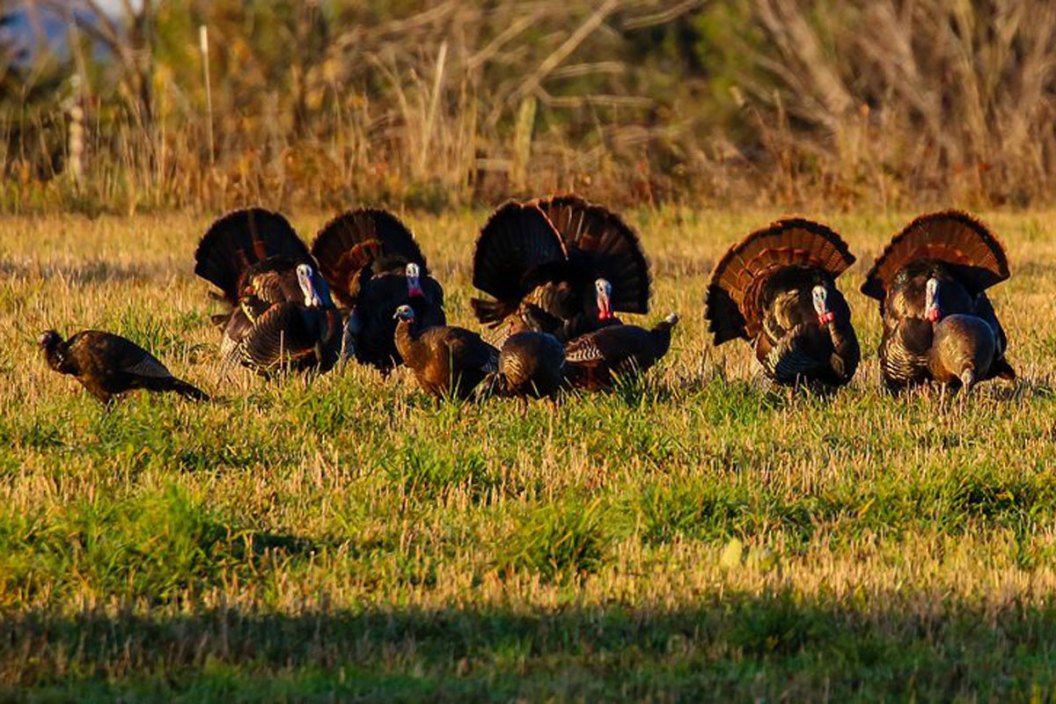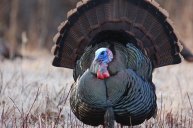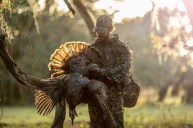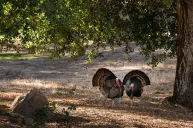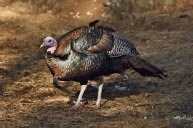It's that time of year, y'all.
There's a chill in the air that has us all thinking: Turkey Time! But while most people run to the local market to buy one in the frozen section, Mother Nature's grocery store is open for Thanksgiving - especially since this year, turkeys at the store are smaller and more expensive than ever. In fact, the price of turkeys for your dinner is up 20 percent year over year, according to the U.S. Department of Agriculture. Let's talk turkey, and why these wild birds are worth a closer look.
Yes, they can fly
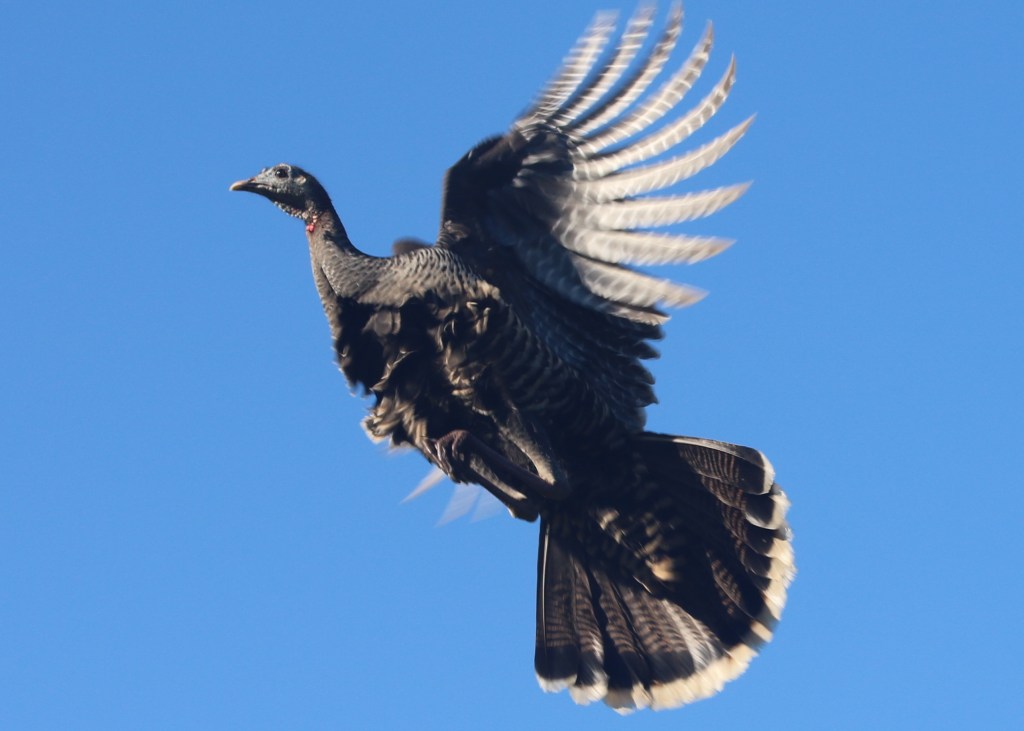
By Grendelkhan - Own work, CC BY-SA 4.0, https://commons.wikimedia.org/w/index.php?curid=56378036
They may not look pretty doing it, but unlike their domesticated counterparts, wild turkeys can indeed fly. Since they're heavy birds that spend most of their time on the ground foraging - and doing other strange things - it's easy to think they can't get lift-off. In fact, they're actually pretty fast in flight, achieving speeds up to 55 mph while staying low to the ground. They're able to fly up to lower tree branches to roost in at night to avoid predators, which they'll do at dusk while returning to ground at dawn. Wild turkeys have excellent eyesight in the daytime (3x that of humans) and can run fast, up to 12 miles an hour. They can swim, too, but don't do that too often if they can help it.
They don't just "gobble"
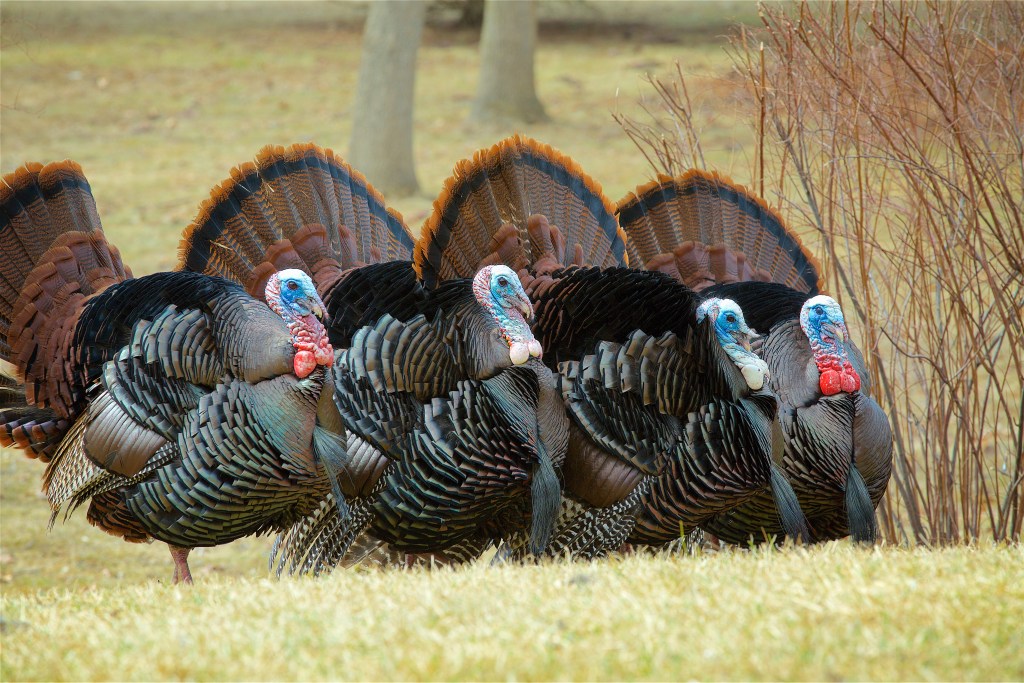
Jeffengeloutdoors.com/Getty Images
Turkeys are famous for their gobble (which sounds more like "ill-obble-obble-obble") but did you know it's only during mating season? Males (known as toms) gobble to lure females (known as hens) and let other males know they're around - and it can be heard up to a mile away! This is why males are also called "gobblers."
Turkeys aren't limited to gobbling, though; they'll also make a yelping noise ("keouk, keouk, keouk") to make contact with others, an alarm sound like "puttt," and "cluck" to call for assembly. Other noises include purrs, whines, and cackles. Females make a yelping sound rather than gobbling. Males also emit a drumming sound or an abrupt "spit" produced by an air sac in their chests. Another difference between males and females? Their poop! A male's is "J" shaped, a female's is spiral.
Some unique characteristics
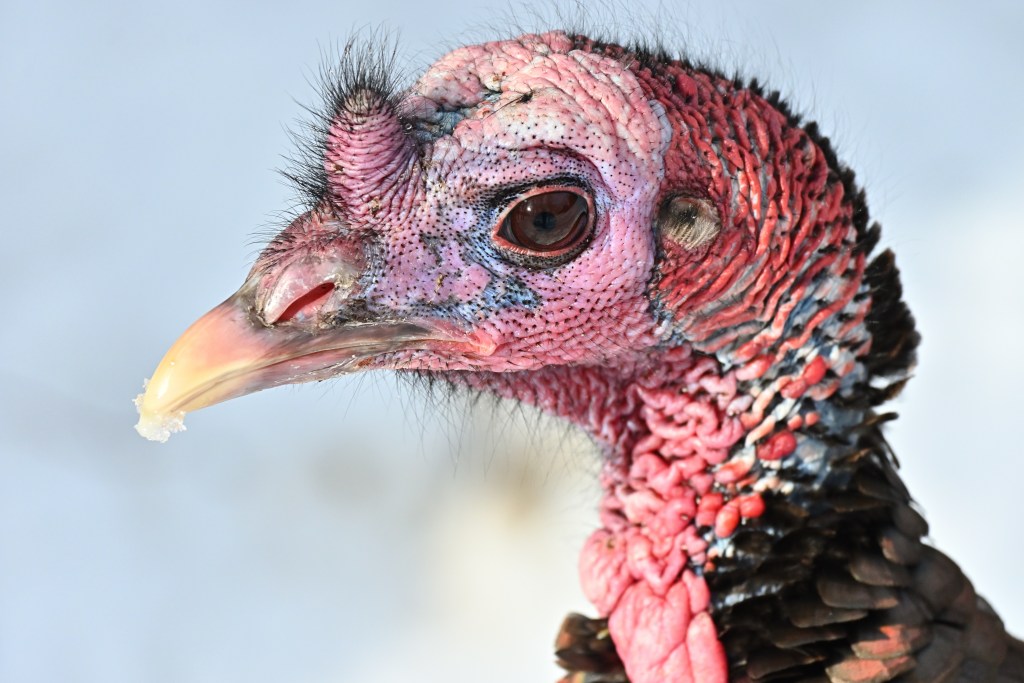
Robert Winkler/iStock / Getty Images Plus
One of the animal kingdom's most unusual and identifiable birds, wild turkeys are brilliantly colored, with red, white, and blue heads that can actually intensify in color when the bird gets excited. The tom displays iridescent feathers of red, purple, green, copper, and bronze, while like many animal species, the female is a more dull brown.
As foragers, you'd expect them to eat nuts, fruit and small insects. But they've also been known to consume small amphibians and reptiles! And if you have a farm (or even just a bird feeder), you might find them in your yard stuffing themselves with leftovers. They've been known to forage with squirrels and deer, helping each other look out for predators.
Feather-ruffling language
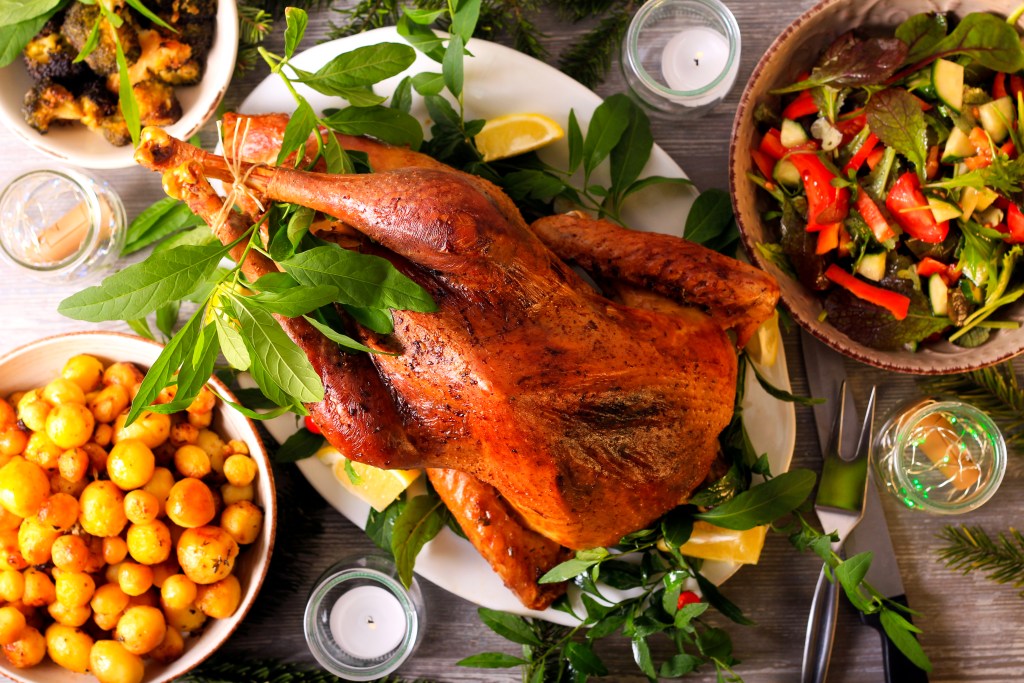
arlutz73/iStock / Getty Images Plus
Ever wonder why we have "dark meat" and "white meat"? As most of us know, the muscles are different on wings, thighs and drumsticks, with more fat going to those areas that are used the most. It's a darker color thanks to the process of converting fat to energy, while meat on lesser-used areas like the breast is lighter in color. But in the mid-1800s, to avoid using "indecent" words like breast or leg, our prudish ancestors came up with the dark and light meat euphemisms to refer to those parts instead. Likewise the word "drumstick" instead of "leg." The more you know.
The five subspecies: Some subtle differences
Eastern wild turkey

Wild Horizons/Universal Images Group via Getty Images
The O.G. of wild turkeys is this one, found in abundance by settlers in the New World in areas like Jamestown and what's now New York. You'll find them as far south as northern Florida, as far west as Minnesota and Missouri, and up north well into Canada. These big birds can get up to four feet tall and are the most commonly hunted wild turkey. Though the first pilgrims may have hunted them as well, these birds were probably not at the first Thanksgiving - goose, ducks or pigeons were preferable at the time.
Merriam's wild turkey
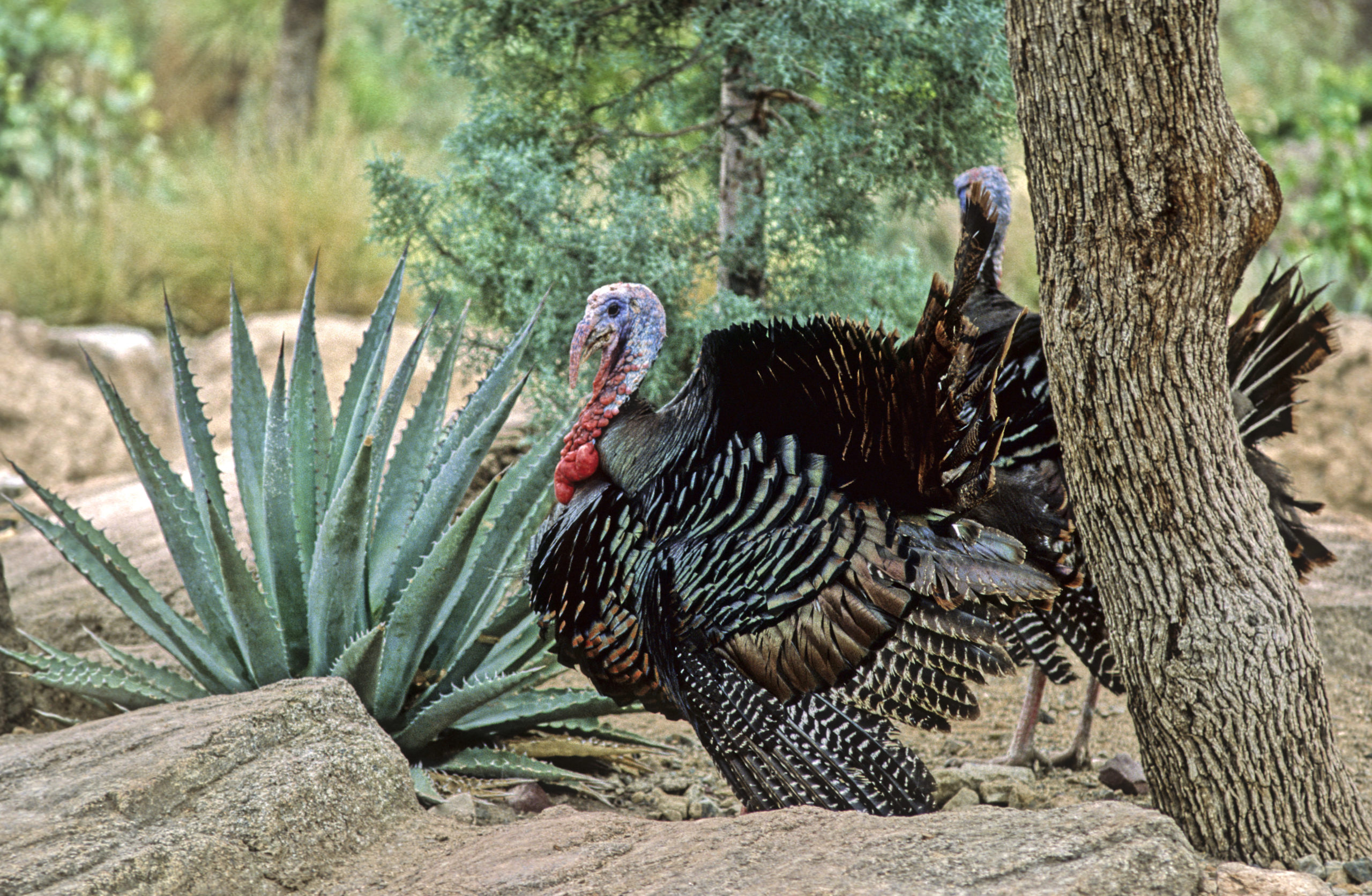
Wild Horizons/Universal Images Group via Getty Images
Close in size to the Eastern, Merriam's has different coloration: black with purple, blue and bronze reflections, with white feathers on the lower back and tail edges. You'll find this turkey farther west, where it was historically fairly isolated from other turkey subspecies in Colorado, Arizona and New Mexico. It's been transplanted to states including California, Utah, Montana and Nebraska.
Rio Grande wild turkey
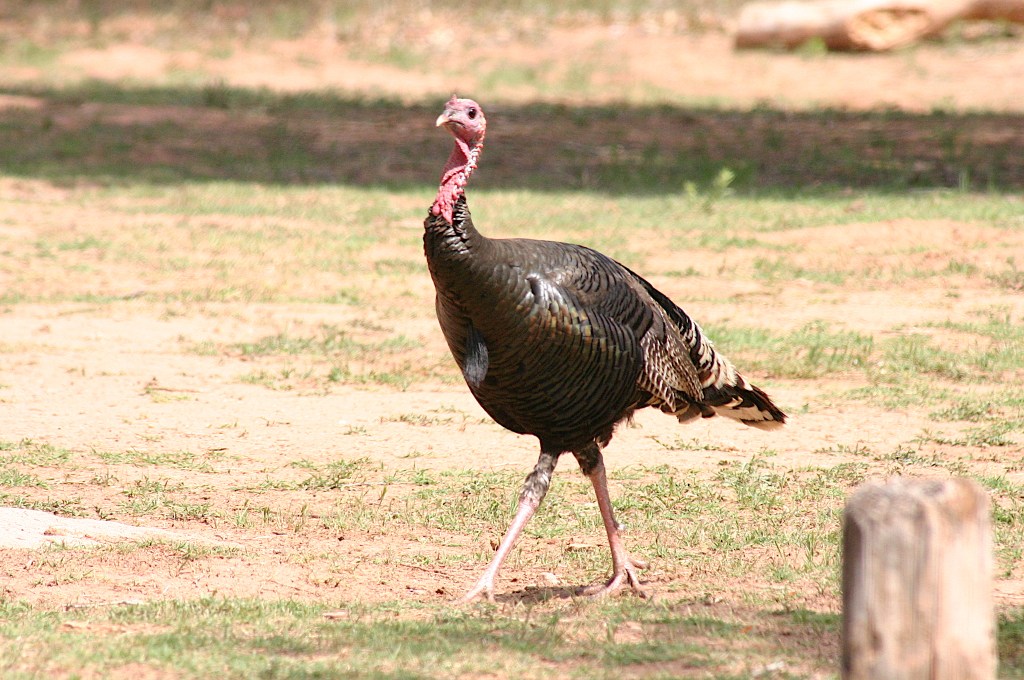
Wild Horizons/Universal Images Group via Getty Images
This subspecies has the largest population and widest range of any wild turkey, its numbers going from just 100,000 birds by 1920 to now estimates of 1 million thanks to better wildlife management. They have long legs thanks to their prairie habitat (from Texas to California and areas north).
Osceola wild turkey
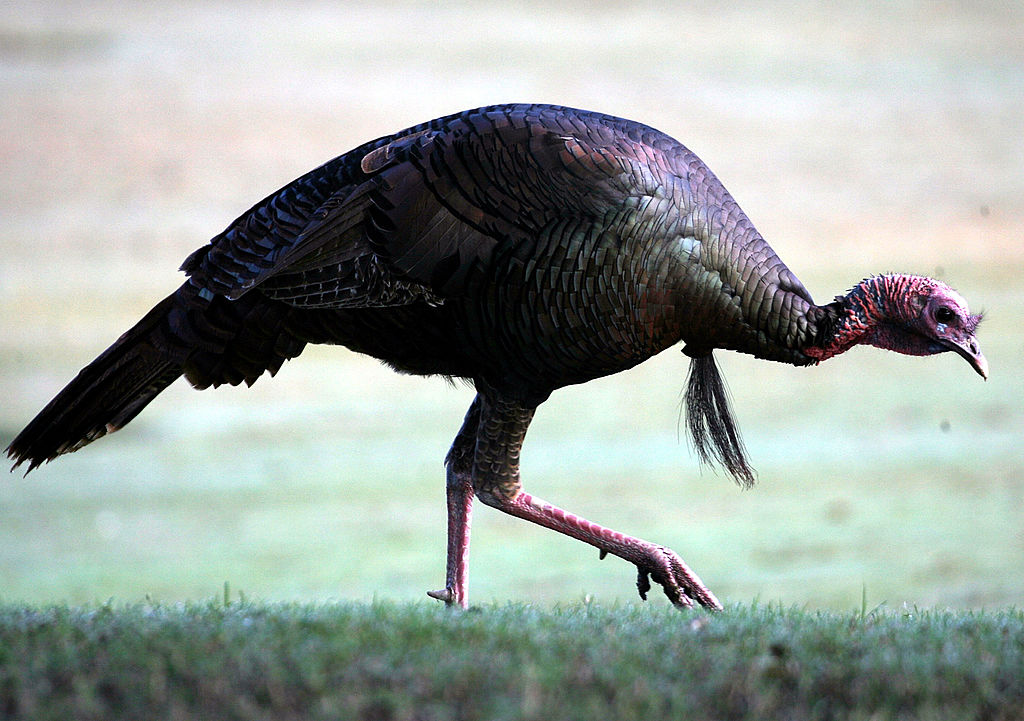
Marc Serota/Getty Images
Also known as the Florida wild turkey after the Seminole leader, some 80,000 to 100,000 of these birds are found in the Florida peninsula - and nowhere else in the world. They congregate in areas of swamps and forest edges. They're the smallest wild turkeys, weighing up to 18 pounds. They live alongside Eastern wild turkeys, but you can tell the difference by their size and feathers, which have less white on them and look generally darker.
Gould's wild turkey
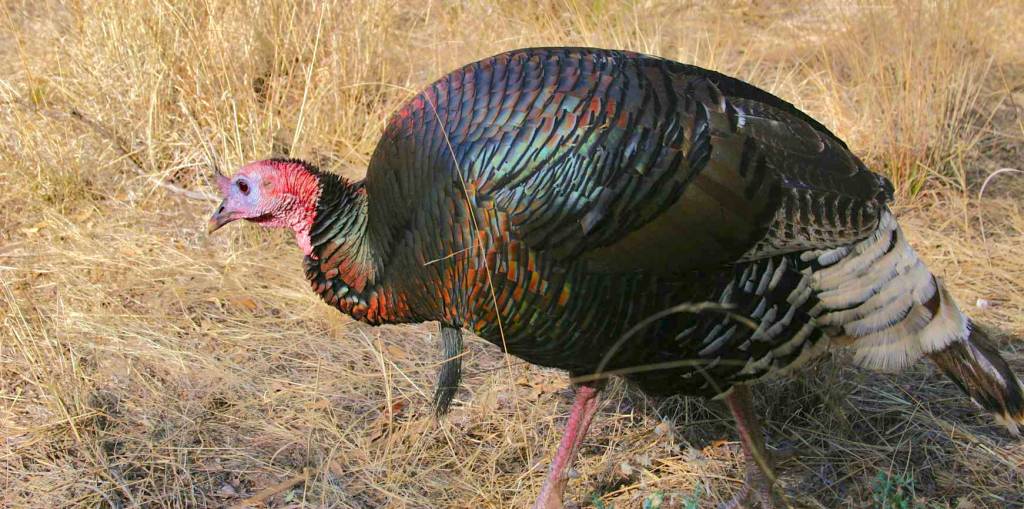
By Tuvas at English Wikipedia, CC BY 3.0, https://commons.wikimedia.org/w/index.php?curid=48618809
This largest of the subspecies is found in Arizona and New Mexico and with numbers limited in the U.S., is heavily regulated. In the 1990s, 35 of them were brought from Mexico (where it is more abundant) and released in Arizona - now the population is large enough to allow hunting, as long as it isn't within Arizona's Chiricahua National Monument. The Gould's looks a bit like Merriam's, only with longer legs, bigger feet and the largest tail feathers of all the wild turkeys.
Gobble up more at our Wide Open Spaces Instagram!
